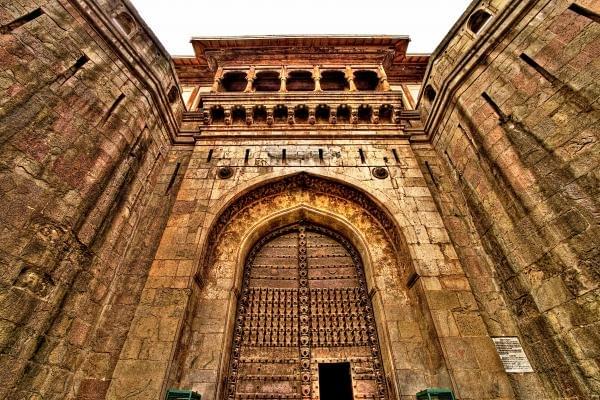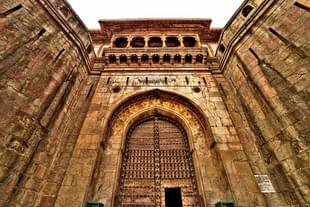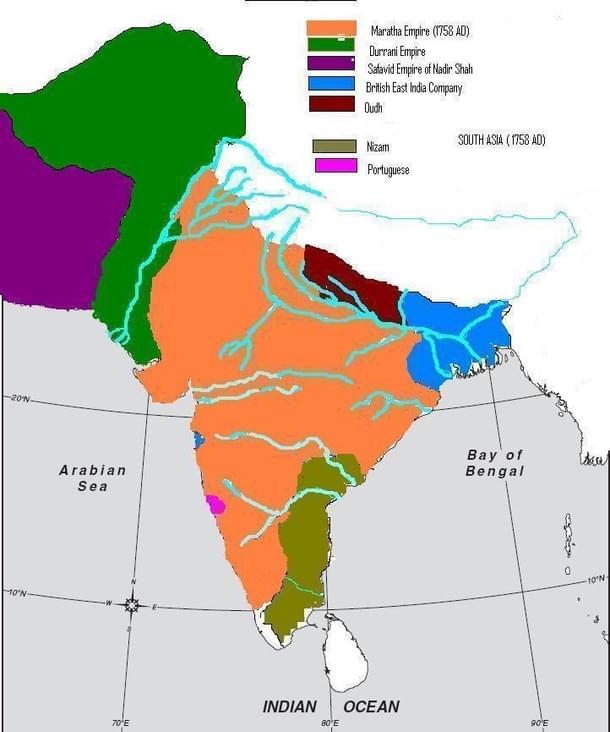Culture
From The Capital Of India To A Divisional Headquarter: Pune’s Long Journey
Aashish Chandorkar
May 01, 2015, 02:10 PM | Updated Feb 24, 2016, 04:32 PM IST
Save & read from anywhere!
Bookmark stories for easy access on any device or the Swarajya app.


Relegated to the status of a Tier-2 city today Pune was once the de-facto capital of India for many decades. The story of the rise of Maratha power and its subsequent decline
“There is still one of which you never speak.’
Marco Polo bowed his head.
‘Venice,’ the Khan said.
Marco smiled. ‘What else do you believe I have been talking to you about?’
The emperor did not turn a hair. ‘And yet I have never heard you mention that name.’
And Polo said: ‘Every time I describe a city I am saying something about Venice.”
Italo Calvino put Venice on high pedestal in the imaginary dialogue between Marco Polo and Kublai Khan in his 1972 book Invisible Cities. If Kublai Khan and Marco Polo extended this conversation 500 years in future to the Indian subcontinent, this may well have been about Pune – the de facto capital of the subcontinent for most of the 18th century.
The Maratha flag flew over Delhi formally for 15 years starting in 1788 with Mahadji Shinde’s conquest of Delhi, till 1803-05 when the second Anglo-Maratha war saw the British take over the city. But the story of Maratha dominance over Delhi, and indeed large parts of the Indian subcontinent started way back in 1713.
Hindavi Swaraj
When Chhatrapati Shivaji established Hindavi Swaraj – Hindu Self Rule – in 1674, he also laid the foundation of the ambitious growth of Maratha Empire, which lasted all of the next century. His self coronation was the beginning of the end of Mughal Empire and in all practicality Aurangzeb’s death in 1707 should mark the end of Mughal rule, though it took another 150 years and several nominal emperors for that formality to play out. The Maratha rulers fought a series of Deccan Wars with Aurangzeb after Chhatrapati Shivaji’s death in 1680 till 1707, when Aurangzeb died in Ahmednagar. This was also the time when both Empires witnessed a series of succession struggles.
Initial Battles for Delhi
In 1713, the fifth Peshwa, the Chief Executive, of the Maratha Empire Balaji Vishwanath engineered the process of establishing control over Delhi. After Aurangzeb’s death, two Sayyid brothers became virtual kingmakers in the Mughal succession race. These brothers were nobles in the Mughal empire, controlling territories in parts of modern day UP and Bihar. Balaji Vishwanath aligned with two Sayyid brothers Hussain Ali and Abdullah Khan, and the Maratha army chief Khande Rao Dabhade along with Sayyid armies deposed Emperor Farrukhsiyar. A nominal ruler Rafi-ud-darjat was installed in Delhi and in return for leaving Delhi to him, Marathas gained rights to collect chauth (one fourth of the revenue) in six Mughal provinces in Gujarat and Malwa. The Marathas also had swarajya recognized in the areas they controlled in Maharashtra with Pune as their seat of power.
From this point on, the decisions made in Satara (till 1728), and Pune thereafter, started to shape the fate and boundaries of regional kingdoms. The Mughal Empire post 1720 lost its centralized nature and continued only as a loose federation of regional kingdoms controlled by nobles with their own personal ambitions, not always aligned to the interests of Empire as a whole. In 1720, Bajirao I, son of Balaji Vishwanath, took over as the Peshwa for the Maratha Empire. Serving Chhatrapati Shahu who ascended to the Maratha throne in 1707, Bajirao I in his 20 years as Peshwa, worked on rapid expansion of the Maratha power in all directions.
Baji Rao I : Winner of 41 Battles
Baji Rao I contributed in two major ways in firming the role of Marathas. Firstly he recognized that offense was the best defense against the Mughal Emperor Muhammad Shah who ascended the throne in 1719. The new Emperor was known as Rangeela for his love of worldly pleasures and was not very powerful militarily throughout his rein till 1748. Secondly Baji Rao I ensured that Marathas assert their freedom and the rights to levy tax on Mughal provinces as per the arrangements of 1714. G.S.Chhabra in his book Advance Study in the History of Modern India (Volume-1: 1707-1803), quotes Baji Rao I’s conversation with Chhatrapati Shahuji: “Strike, strike at the trunk and the branches will fall off themselves. Listen but to my counsel, and I shall plant the Maratha banner on the walls of Attock”.
In the pursuit of his strategy of winning regional Mughal power centers, the biggest thorn was Nizam Ul Mulk of Hyderabad, who had the ambitions of creating a large kingdom independent of Mughals himself. Baji Rao 1 got the better of Nizam in battles of Shakharkheda and Palkhed, and by 1728 he was ready to expand north. He moved the seat of power formally to Pune, settling many rich businessmen and nobles from Satara to Pune. By 1735, he had established control over much of Khandesh, Burhanpur, Malwa, Gujarat and Bundelkhand.
He then proceeded to attack Delhi. After a series of battles over 1735 – 1737, Marathas humbled the Mughals in Delhi, winning large parts of wealth and Mughal treasure and retreated to Pune. Baji Rao I is said to have won 41 battles in his lifetime and never lost any. His military tactics and ability as a cavalry general earned him great respect. He also organized the Maratha Empire as part of his Delhi and North India conquests. During his times, various Maratha feudatory states got formal sanction. These states and their dynasties – Bhonsale (Nagpur), Gaikwad (Vadodara), Holkar (Indore), Pawar (Dhar and Dewas), Bundele (Bundelkhand) and Scindia (Gwalior) – played a big part in maintaining and retaining Maratha supremacy over much of North India.
From Attock To Cuttack
After Baji Rao I died in 1740, his son Balaji Bajirao, also known as Nanasaheb, became the next Peshwa. He focused on winning territories in Bengal, Odisha and in South, where Marathas won as far as Tiruchirappalli. Meanwhile Raghunath Rao, brother of Nanasaheb, continued to advance North along with the various regional Maratha generals, now to establish formal Maratha rule and not just to win battles for accumulating and expanding war chests.
In 1757, Raghunath Rao’s armies defeated the Afghan armies of Ahmed Shah Abdali, who had plundered Delhi just a year back. Over the next two years, Maratha armies won battles with various Afghan and Mughal nobles in modern day Punjab on both sides of the border. Marathas assumed control of Lahore and Peshawar and flew their flag on the Fort of Attock, constructed by Akbar The Great at the foothills of the famed Khyber Pass to check on the marching Central Asian armies into the subcontinent.
Marathas formally assumed control of Delhi after the 1757 Battle of Delhi and Raghunath Rao appointed Antaji Mankeshwar as the Maratha representative in charge of Delhi. Mughal Emperor Alamgir II was retained as a notional head, but he had no real powers.
By 1760, the Maratha kingdom stretched from Attock to Cuttack. No other Hindu or Indian dynasty or ruler had wielded so much influence in the Indian subcontinent after the 6th century. The map below sourced from Wikipedia highlights the parts of the subcontinent (in orange) under Maratha control in 1760.

The Third Battle of Panipat
Marathas temporarily faced big setbacks soon after their conquest of Peshawar and never really got the time or the space to create a permanent governance system. Ahmed Shah Abdali in his fifth invasion of India got together with Najib-ud-Daula, also of Afghan origin, and took on the Maratha forces in Panipat. The defeat in this battle – chronicled in great detail by Uday S. Kulkarni in his book Solstice at Panipat: 14 January 1761 – put a brake on the expansion of the Maratha Empire.
This defeat also ensured that no permanent local Hindu resistance could come together against the Central Asian invaders, with the Jat and Rajput rulers of northern territories not helping the Marathas. As part of the expansion, Marathas had levied taxes and waged localized battles against Jats and Rajputs and the Battle of Panipat got precipitated too close to these bilateral enmities. Marathas also suffered big losses in this battle with many of their top officers and strategists killed by the Afghans.
Reclaiming Delhi
Post the losses at Panipat, the Peshwas and the Pune based Empire had to rebuild. Under Peshwa Madhav Rao, who assumed the duties at a tender age of 16, the task of pushing again in North India was then taken up by Malhar Rao Holkar of Indore who continued his attempts of winning territories in Rajasthan and Mahadji Scindia who along with his French general Benoit de Boigne fought battles to reclaim Delhi itself.
Marathas reclaimed Delhi in 1771 when Mahadji Scindia conquered the city. He then appointed Shah Alam II as the notional Mughal ruler. Maratha forces then attacked the Afghan rulers of Rohilakhand to ‘take revenge’ for the loss at Panipat and ransacked the kingdom. Yet again, the Maratha supremacy was established in the north and continued without resistance for the better part of next two decades. During this time, Marathas defeated Tipu Sultan at the Battle of Gajendragad and the Rajput kingdoms of Jaipur and Jodhpur and by 1788, the Maratha domination of the subcontinent more or less mirrored the picture of 1760.
Peshwa Madhav Rao died very young at the age of 27 after 11 years of stellar work – not only did the young Peshwa rebuild the Maratha empire after the loss of Panipat, he also ensured that the loss did not release the strong grip which the Marathas had built over the subcontinent. British historian Grant Duff has summarized his contribution thus: “…the plains of Panipat were not more fatal to the Maratha Empire than the early end of this excellent prince.”
In 1788, Marathas faced resistance in Delhi when the Afghan Rohillas attempted to install their own puppet Emperor. The troops of Mahadji Scindia crushed this resistance and Alam Shah II was reinstalled to the throne. The Maratha flag flew for the first time formally in Delhi, despite having significant control over the country for the past 50 years.
Pune, which had been the de facto ‘capital’ of the Indian subcontinent for over five decades, assumed formal control over Delhi for the first time.
The Rise of the British
As the Maratha Empire assumed the shape of a confederacy after the Panipat loss, with strong regional leaders asserting greater power and control, the Peshwas in Pune started to lose ‘visibility’ over the kingdom. The British took advantage of this situation and continued to intervene in local succession battles in Pune, Indore and Gwalior, trying to provide local support to make small incremental gains. In 1775, the British had lost the first Anglo-Maratha war against the combined Maratha forces at Vadgaon. Post this, their divide and rule policy came to the fore.
While Nana Phadnavis effectively ruled the Maratha Empire presiding over a council of 12 regents with Peshwa Sawai Madhav Rao as the nominal head 1772 through 1795, the British continued to match his governance tactics and continued to engage every Maratha kingdom individually. When Peshwa Baji Rao II could not hold the Empire together and was defeated by the Holkars in 1802 in Battle of Poona, the disintegration became formal.
The Second Anglo – Maratha War of 1803 which lasted till 1805 formalized the arrangement of each regional kingdom having its own arrangement with the British to protect own interests, despite the combined Maratha power matching the British in the war. As part of this war, Marathas did lose the Battle of Delhi in 1803, thus ending their supremacy over the de facto capital of the Indian subcontinent.
The Formal End
Between 1805 and 1818, Mughals continued to be under the Maratha protection, but this arrangement had no teeth. The British continued to make deep inroads throughout India fighting smaller pitched battles. The final British – Maratha showdown happened in 1818 – in the third Anglo – Maratha war, the British took control of all of the Maratha Empire after winning the Battle of Koregaon.
The Maratha control of Delhi which started in 1713 then came to an end 105 years later. In 1818, India truly became a British colony, although they had to wait for another 39 years to truly colonize India.
The Pune Legacy
Though British ensured a place of prominence for Pune in their administrative designs, the fall from the de facto national capital to an assorted cantonment town was huge. Acharya Atre, the famed Marathi literary stalwart has mentioned that when the British were debating relocating the capital from (then) Calcutta they seriously considered Pune as an option alongside Delhi. Delhi won purely on location and for the history.
Pune did take lead at the national level a few more times. The 1857 independence struggle was led in part by Tatya Tope, a close associate of the adopted son of Peshwa Baji Rao II. Mahatma Phule and Justice MG Ranade contributed immensely towards social reform, while Gopalkrishna Gokhale and Bal Gangadhar Tilak laid the foundations of the independence movement. Pune originated renaissance continued, but the city had already lost out.
Two hundred years later, Pune continues to remain in the shadows of Mumbai, exerting neither the commercial and legislative power of the metropolis nor the”moral governmental’ control of the fast growing Nagpur. Administratively speaking, Pune is just another divisional headquarter. Over hundreds of years, several cities witness attrition of power and influence. Pune lost it all over a couple of decades in the early 19th century.
Aashish Chandorkar is Counsellor at the Permanent Mission of India to the World Trade Organization in Geneva. He took up this role in September 2021. He writes on public policy in his personal capacity.





